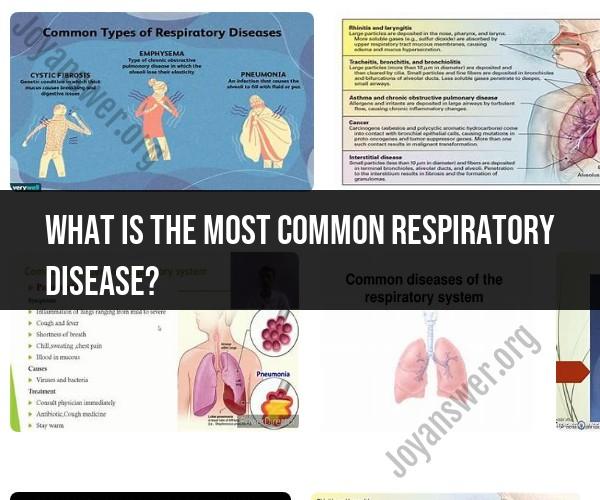What is the most common respiratory disease?
The most common respiratory disease worldwide is acute respiratory infections (ARIs), which include various conditions that affect the upper and lower respiratory tract. ARIs encompass a wide range of illnesses caused by viruses, bacteria, and other pathogens. These infections can be mild, such as the common cold, or more severe, like pneumonia. Here's a comprehensive overview:
1. Common Cold:
- The common cold is one of the most prevalent respiratory infections globally. It is typically caused by rhinoviruses and can lead to symptoms like a runny or stuffy nose, sneezing, coughing, and a sore throat.
2. Influenza (Flu):
- Influenza is a highly contagious viral infection that affects the respiratory system. It can lead to symptoms like fever, cough, sore throat, body aches, and fatigue. Influenza can range from mild to severe and may lead to hospitalization and complications, especially in vulnerable populations.
3. Pneumonia:
- Pneumonia is an infection that inflames the air sacs in one or both lungs. It can be caused by various pathogens, including bacteria, viruses, and fungi. Symptoms often include fever, cough, difficulty breathing, and chest pain. Pneumonia can range from mild to life-threatening, depending on the cause and the overall health of the individual.
4. Bronchitis:
- Acute bronchitis is characterized by inflammation of the bronchial tubes (airways). It is often caused by viral infections and leads to symptoms like a persistent cough, mucus production, and chest discomfort. Chronic bronchitis is a form of chronic obstructive pulmonary disease (COPD) and is characterized by long-term inflammation and coughing.
5. Respiratory Syncytial Virus (RSV) Infection:
- RSV is a common respiratory infection, particularly in infants and young children. It can cause bronchiolitis and pneumonia in severe cases.
6. COVID-19:
- The COVID-19 pandemic, caused by the novel coronavirus SARS-CoV-2, has highlighted the global impact of respiratory diseases. COVID-19 can range from asymptomatic or mild cases to severe respiratory distress and death.
7. Tuberculosis (TB):
- TB is a bacterial infection caused by Mycobacterium tuberculosis. It primarily affects the lungs and can lead to symptoms like coughing, weight loss, and night sweats. TB is a major global health concern, especially in areas with limited healthcare resources.
8. Asthma:
- Asthma is a chronic respiratory condition characterized by airway inflammation and bronchoconstriction. It leads to recurrent episodes of wheezing, coughing, and shortness of breath. While not contagious, asthma is a prevalent chronic respiratory disease worldwide.
9. Chronic Obstructive Pulmonary Disease (COPD):
- COPD is a progressive lung disease that includes chronic bronchitis and emphysema. It is often caused by smoking and is characterized by airflow obstruction, leading to symptoms like chronic cough and difficulty breathing.
10. Allergies:- Allergic rhinitis (hay fever) and allergic asthma are common respiratory conditions triggered by allergens like pollen, dust mites, and pet dander. They lead to symptoms such as sneezing, nasal congestion, and wheezing.
ARIs, including the common cold and influenza, are the most prevalent respiratory diseases, but the prevalence and impact of other respiratory conditions can vary by region and population. Respiratory diseases collectively represent a significant global health challenge, leading to millions of illnesses, hospitalizations, and deaths each year. Public health measures, vaccination programs, and improved healthcare access are crucial in reducing the burden of respiratory diseases worldwide.













